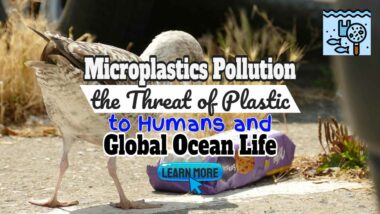Pipe Flange Basics, Uses and Types: Piping applications require a lot of joining and connections as oftentimes, you cannot have a straight pipe from end to end. At some point, pipes have to be connected to something; a piece of equipment, a valve, or any other component. To make these connections, you require a joining method.
One of the most used methods for joining pipes is welding. Flanges offer an alternative to welding and this is the second most used method for joining pipes. One advantage of flanges over welding is that they provide flexibility, easy disassembly and easier maintenance of a piping system. You can get greater access to the system components and this makes managing them easier.
What is a Pipe Flange?
Flanges are tools that are used for connecting pipes, valves, pumps and other components like vacuum chambers to ensure that a system works. The pipe flange connects all these various components through gaskets and bolted connections.
They are often made with stainless or carbon steel with the most common specification being ASME B16.5 and ANSI B16.5. They may also be made with other metals. They are available in different styles, sizes and pressure classes and are used in commercial and industrial applications. They are typically classified with pressure ratings from 150 to 2500.
In addition to the pressure class, some flanges require that the pipe schedule be specified. Examples of these include socket weld and weld neck flanges. Specifying this ensures that the pipe bore matches the bore of the flange.
Pipe Flange Basics – How Pipe Flanges Operate
Typically a flange has a flat or flush surface. These are perpendicular to any pipe they are attached to. These surfaces are joined mechanically via collars, bolts, welds, or adhesives. Flanges are typically attached to pipes via brazing, welding, or threading.
Welding works by melting the work pieces and adding a filler material. A lot of pipe flanges are designed to be welded and it is good for strong and high-pressure connections.
Brazing joins materials via melting a sort of filler metal that solidifies and acts as the connector. It does not cause thermal distortion or melt the work pieces. Threading allows pipes and flanges to be screwed together similar to the way nuts and bolts work. You can learn about pipe flange basics and methods of joining pipes here.
A Look At The Different Flange Types and Their Characteristics
Flanges are not one-type-fits-all. They come in different sizes and it is important to match the ideal flange design to your intended usage and piping system. This will ensure that the system’s operation is reliable and it will have a long service life. Some of the common ones are:
Slip On
A slip on is basically a ring that is placed on the end of a pipe and a flange face extending from it with sufficient distance. This allows a welded bead to be applied to its inner diameter.
Slip on flanges are quite common and they are available in a range of sizes. This helps to accommodate systems that have rates of flow and throughput. The inner dimension of the flange is typically bigger than the external dimension of the pipe.
Because of this, you will need fillet welding to connect it to the pipe or equipment. This type of flange is used with a flat or raised face and it is ideal for low-pressure applications.
Threaded
This is also referred to as screw or screwed-on flange. It has a thread inside its bore that fits with a matching thread on a pipe. It is ideal for situations where welding cannot be applied like in a highly explosive environment where welding can be risky.
Threaded flanges are typically used on smaller pipes and applications with low pressure. They are not suitable for piping systems that have thin wall.
Lap Joint
Lap joint flanges are also referred to as Van Stone Flange. They consist of a stub end with a flange. The flange in itself is not welded. The stub end is slipped over the flange or it is inserted into it and this is what is welded to a pipe.
This type of arrangement helps alignment in situations where non-alignment can be an issue. In a lap joint, the flange does not come in contact with the fluid. The stub end is what is welded to the pipe and that is what comes in contact with the fluid.
Stub ends usually come in either type A or B but type A is the most common. This type of flange only comes in a flat face. It looks similar to a slip on but lap joints have round edges on their backside.
Socket Weld
Socket weld is great for small diameter pipes in low pressure and low-temperature situations. It features a connection where one places the pipe into the flange. The connection is then secured with one multi-pass fillet weld.
This makes it easier to install than other types of welded flanges. It also avoids the limitations that are associated with those with threaded ends.
Weld Neck
A weld neck flange is similar to a lap joint in that their installation requires butt welding. Its performance and integrity in systems that have several repeat bends make it useful for process piping. Also, it is ideal for high-temperature as well as high-pressure systems.
Other types of flanges include blind, reduced, spectacle blind, long neck and square flanges. You can see more here http://www.wermac.org/flanges/flanges_pipe-connections_pipe-flanges.html.
Conclusion to Pipe Flange Basics
Pipe flanges are connectors that have a variety of applications in commercial and industrial settings. They provide a reliable way of connecting pipes with various equipment and other components of any processing system.
The Basics of Hydroforming and Metal Fabrication
The Basics of Hydroforming and Metal Fabrication: In every working environment and household, metal determines the way we operate. From light fittings to appliances to utensils, desk tools, and chairs, metal is a stabilizer that makes our day-to-day conveniences possible. What is Hydroforming? This is a process of manufacturing different shapes of malleable metals like […]







